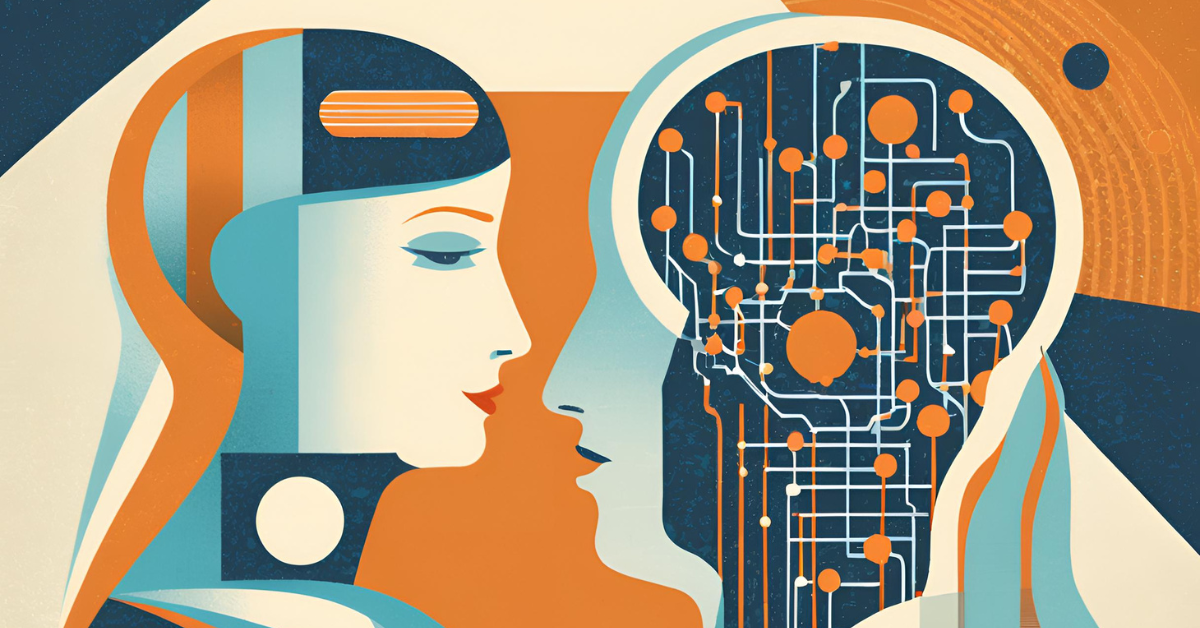
Introduction
Artificial Intelligence (AI) has revolutionized numerous industries, transforming how tasks are automated and decisions are made. Central to the development of AI applications are frameworks that provide tools and libraries to build and deploy machine learning models. Among these frameworks, TensorFlow, PyTorch, and Keras stand out due to their robustness, flexibility, and widespread adoption. This article delves into these three popular AI frameworks, exploring their features, applications, benefits, challenges, and future prospects.
Here’s comparison of TensorFlow, PyTorch, and Keras highlighting their key differences:
| Feature/Aspect | TensorFlow | PyTorch | Keras |
|---|---|---|---|
| History and Development | Developed by Google Brain, released in 2015 | Developed by Facebook’s AI Research, released in 2016 | Developed by François Chollet, released in 2015, now part of TensorFlow |
| Key Features | Flexibility, Scalability, Community Support | Dynamic Computation Graphs, Ease of Use, Strong Community | User-friendly API, Integration with TensorFlow, Modularity |
| Technical Specifications | Supports multiple CPUs/GPUs, written in Python, C++, Java | Primarily in Python, supports C++, uses autograd for automatic differentiation | Supports multiple backends (TensorFlow, Theano, CNTK), written in Python |
| Applications | Healthcare, Finance, Automotive, Research | Natural Language Processing, Computer Vision, Reinforcement Learning | Healthcare, Finance, Entertainment, Research |
| Benefits | High Performance, Production-ready tools | Flexibility, Developer-friendly | Simplicity, Rapid prototyping, Compatibility with TensorFlow |
| Challenges and Limitations | Steep learning curve, complex debugging | Less mature deployment tools, performance optimization | Limited flexibility for advanced users, may not be as optimized for performance |
| Latest Innovations | TensorFlow Lite, TensorFlow.js, XLA compiler | PyTorch Lightning, PyTorch Mobile | Eager execution mode, TPU support via TensorFlow |
| Future Prospects | Promising with ongoing improvements in usability and integration | Growth in research community, improved deployment tools | Continued popularity for rapid prototyping, close integration with TensorFlow |
| Installation | pip install tensorflow | pip install torch | pip install keras (also pip install tensorflow for TensorFlow integration) |
| Basic Tutorial | MNIST dataset training example | CIFAR-10 dataset training example | Image classification example in Keras documentation |
| Advanced Usage | Custom model training, distributed computing, TensorFlow Serving | Custom loss functions, neural network modules, distributed training | Custom callbacks, multi-GPU training, model serialization |
| Comparative Strengths | Comprehensive ecosystem, robust production tools | Dynamic computation graph, research flexibility | High-level API, ease of use for quick experimentation |
TensorFlow
History and Development TensorFlow was developed by the Google Brain team and released as an open-source project in 2015. It quickly gained traction due to its comprehensive ecosystem for machine learning and deep learning tasks.
Key Features
- Flexibility: TensorFlow supports a range of machine learning and deep learning models, making it versatile for various applications.
- Scalability: It can run on multiple CPUs and GPUs, and even on mobile devices, allowing for large-scale model training and deployment.
- Community Support: With a vast community and numerous resources, TensorFlow users benefit from extensive tutorials, guides, and forums.
Technical Specifications TensorFlow uses data flow graphs to represent computational tasks. It supports languages like Python, C++, and Java, and provides high-level APIs for ease of use.
Applications
- Industry Use Cases: TensorFlow is widely used in industries such as healthcare for medical image analysis, finance for fraud detection, and automotive for autonomous driving.
- Research and Development: Academic institutions and research labs leverage TensorFlow for cutting-edge AI research.
Benefits
- Performance: Optimized for performance with features like XLA (Accelerated Linear Algebra) compiler for high-speed computation.
- Production-ready: TensorFlow Extended (TFX) provides tools for deploying machine learning models in production.
Challenges and Limitations
- Complexity: TensorFlow can be complex for beginners due to its steep learning curve.
- Debugging: Debugging TensorFlow models can be challenging, although tools like TensorFlow Debugger (tfdbg) help mitigate this.
Latest Innovations TensorFlow continues to evolve with features like TensorFlow Lite for mobile and embedded devices, and TensorFlow.js for running models in the browser.
Future Prospects The future of TensorFlow looks promising with ongoing developments aimed at improving usability, performance, and integration with other tools and platforms.
Comparative Analysis with PyTorch and Keras TensorFlow’s comprehensive ecosystem and production-ready tools set it apart from PyTorch and Keras, which focus more on ease of use and flexibility.
User Guides
- Installation: TensorFlow can be installed via pip with the command
pip install tensorflow. - Basic Tutorial: A simple example of training a neural network on the MNIST dataset can be found in the TensorFlow documentation.
- Advanced Usage: Advanced topics include custom model training, distributed computing, and TensorFlow Serving for model deployment.
PyTorch
History and Development PyTorch was developed by Facebook’s AI Research lab (FAIR) and released in 2016. It quickly gained popularity among researchers due to its intuitive interface and dynamic computation graph.
Key Features
- Dynamic Computation Graphs: Unlike TensorFlow’s static graphs, PyTorch builds dynamic graphs, allowing for more flexibility during runtime.
- Ease of Use: PyTorch’s syntax and operation are more intuitive and closer to standard Python programming, making it user-friendly.
- Strong Community: PyTorch has a rapidly growing community, providing ample resources, tutorials, and support.
Technical Specifications PyTorch is primarily built in Python but also supports C++. It utilizes the autograd library for automatic differentiation and GPU acceleration via CUDA.
Applications
- Industry Use Cases: PyTorch is used in applications such as natural language processing, computer vision, and reinforcement learning.
- Research and Development: Its dynamic nature and ease of debugging make it a favorite among academic researchers.
Benefits
- Flexibility: The dynamic computation graph allows for easier model experimentation and debugging.
- Developer-friendly: PyTorch’s design is intuitive, reducing the barrier to entry for new users.
Challenges and Limitations
- Deployment: PyTorch’s tools for deployment are less mature compared to TensorFlow’s TFX.
- Performance: While competitive, PyTorch’s performance optimization tools are not as extensive as TensorFlow’s.
Latest Innovations Recent updates include PyTorch Lightning for simplifying model training and PyTorch Mobile for running models on mobile devices.
Future Prospects PyTorch is expected to continue its growth in the research community and improve its production deployment capabilities.
Comparative Analysis with TensorFlow and Keras PyTorch’s dynamic computation graphs and ease of use contrast with TensorFlow’s static graphs and production-readiness. Compared to Keras, PyTorch offers more flexibility and control.
User Guides
- Installation: PyTorch can be installed via pip with the command
pip install torch. - Basic Tutorial: Tutorials for training models on datasets like CIFAR-10 are available in the official PyTorch documentation.
- Advanced Usage: Advanced topics include custom loss functions, neural network modules, and PyTorch’s distributed training.
Keras
History and Development Keras was developed by François Chollet and initially released in 2015. It was designed to enable fast experimentation with deep neural networks and is now integrated into TensorFlow.
Key Features
- User-friendly API: Keras provides a simple, high-level API for building and training models, making it accessible to beginners.
- Integration with TensorFlow: As part of the TensorFlow ecosystem, Keras benefits from TensorFlow’s robust infrastructure.
- Modularity: Keras allows for easy modular construction of neural networks.
Technical Specifications Keras supports multiple backends, including TensorFlow, Theano, and Microsoft Cognitive Toolkit (CNTK). It is primarily used with Python.
Applications
- Industry Use Cases: Keras is used in industries like healthcare for diagnostics, finance for predictive analytics, and entertainment for content recommendations.
- Research and Development: Its ease of use makes Keras popular in academic settings for developing and testing new models.
Benefits
- Simplicity: Keras abstracts much of the complexity of deep learning, enabling rapid prototyping.
- Compatibility: Seamlessly integrates with TensorFlow, allowing users to leverage TensorFlow’s extensive features.
Challenges and Limitations
- Flexibility: Keras’ simplicity can be limiting for advanced users who need fine-grained control over model construction.
- Performance: While sufficient for many tasks, Keras may not be as optimized for performance as lower-level frameworks.
Latest Innovations Keras continues to evolve with TensorFlow, including new features like TensorFlow 2.0’s eager execution mode and support for TPU acceleration.
Future Prospects Keras is expected to remain a popular choice for rapid prototyping and continue to integrate closely with TensorFlow’s advancements.
Comparative Analysis with TensorFlow and PyTorch Keras offers simplicity and ease of use compared to TensorFlow’s comprehensive ecosystem and PyTorch’s flexibility. It is ideal for quick experimentation and prototyping.
User Guides
- Installation: Keras can be installed via pip with the command
pip install keras(as part of TensorFlow,pip install tensorflowalso works). - Basic Tutorial: The Keras documentation provides a tutorial for building a simple neural network for image classification.
- Advanced Usage: Advanced topics include custom callbacks, multi-GPU training, and model serialization.
Comparative Analysis
TensorFlow vs. PyTorch TensorFlow excels in production deployment with its robust tools and performance optimization, while PyTorch is favored for research due to its dynamic computation graph and ease of use.
TensorFlow vs. Keras TensorFlow offers a more comprehensive set of tools for large-scale deployment, whereas Keras simplifies the model-building process, making it ideal for quick prototyping and experimentation.
PyTorch vs. Keras PyTorch provides more flexibility and control over model construction compared to Keras’ high-level API, making PyTorch suitable for complex research tasks and Keras for rapid development.
Summary of Strengths and Weaknesses Each framework has its strengths: TensorFlow for production readiness, PyTorch for research flexibility, and Keras for simplicity and rapid prototyping. The choice of framework depends on the specific needs of the project and the user’s familiarity with the tools.
Conclusion
Choosing the right AI framework depends on the project’s requirements, the user’s expertise, and the specific use case. TensorFlow, PyTorch, and Keras each offer unique advantages that cater to different aspects of AI development. As the field of AI continues to evolve, these frameworks will undoubtedly advance, providing even more powerful tools for developers and researchers. Whether it’s TensorFlow’s scalability, PyTorch’s flexibility, or Keras’ simplicity, these frameworks are instrumental in driving the future of artificial intelligence.
![]()
Subscribe to our QABash Weekly Newsletter
Dominate – Stay Ahead of 99% Testers!





